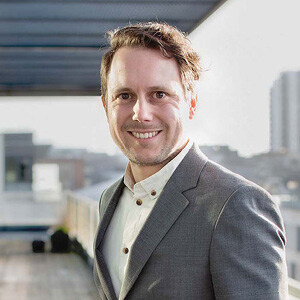How to Create a Sustainable Working Environment

Do you have a sustainable working environment at your workplace? For something to be sustainable, you should be able to use it without unnecessarily affecting or burdening the existing foundation. Among other things, having a sustainable working environment requires that you rethink the concept of the employee as a resource and that leaders and the organization accept that employees are only there on loan from their family, leisure time, society, and so on.
|
Go to: |
For something to be sustainable, you should be able to use it without unnecessarily affecting or burdening the existing foundation. The same applies to people when we talk about a sustainable working environment.
An environment where the employee as a person is not affected or burdened unnecessarily. Organizations that want to be sustainable must therefore ensure that the employees are not only utilized during the time available, but that they can also be re-used outside work in life’s other arenas and phases.
A sustainable working environment requires that both organizations and leaders accept that the employees are only there on loan. On loan from their family, their leisure time, and society.
Responsibility and decency in this regard prohibit us from seeing the employee as a resource that should simply be exploited and optimized for profit until the mutual employment relationship terminates. Today, a green company has sustainable processes and policies for re-using everything from paper and plastic to office supplies, so as not to unnecessarily impact the already fragile climate. We need the same re-use policy for our employees.
How do Things Stand?
Den Nationale Sundhedsprofil from 20211 indicated an alarming tendency: mental health among the Danish population is falling sharply. In particular, young women (16-34 years old) were in focus, and it is certainly a terrifying read.
However, it is worth noting that for all ages, across genders, and educational levels, there is a growing decline in mental health – a decline that can be observed, without exception, since 2010 and which has demanded action for many years now.
One thing is the status as it stands right now – another is the future, which like good consultants, we are looking into. Across gender, age, and educational level, mental health is facing challenges.
The same applies when we focus on stress levels among Danes: “The share of adult Danes with a high stress level has increased from 21 percent in 2010 and 2013 to 25 percent in 2017 and 29 percent in 20212” A development that does not seem to be slowing.
We can assume that there is something structurally wrong in society, but if we direct our focus towards one of the very large arenas in our lives, namely the workplace, what responsibilities and necessary changes can we uncover?
Long-Term Leadership in a Sustainable Working Environment
When we accept the premise that the employees are only on loan, then we also accept responsibility that, at some point, we will need to say goodbye.
This farewell will be the launch pad towards a new place of work, time off, or retirement – another arena where the individual will continue to need to have energy and vitality.
Therefore, we need to consider a bigger perspective in our day-to-day leadership, and this is where responsibility becomes two-pronged:
1: The individual leader is responsible for being aware of how the working day affects life when the employee is off work and how the usage of resources either positively or negatively affects the following day, week, and times.
2: Furthermore, all organizations are required to consider and express which leadership they want to practice – and thus be conscious of the consequences this leadership (whether good or bad) has for the individual and eventually for society.
The Organizational Responsibility
Organizations need to expand their perspective concerning their leadership. First and foremost, this requires a recognition of the need for a conversation about leadership.
What is good leadership with us? Which expectations do we have for our leaders? Last but certainly not least: How do we train our leaders to be able to practice this form of leadership?
This responsibility is naturally placed at the top of the food chain, where top management should take the lead in prioritizing this conversation.
By promoting dialog and ensuring clear alignment of expectations with leadership, the best conditions are established for being a role model for good and transparent leadership.
It’s all about decency in leadership. As an organization, are we ensuring the best framework for exercising the leadership we expect from our leaders?
And if we have expectations for our leaders, have we made sure to prepare them adequately to live up to these expectations and have we actually trained them in leadership?
As Malene Friis Andersen so eloquently said in TV 2 News on November 28, 2022, we should “...perhaps talk more about the leaders’ (im)possible role...” to why so many of them suffer stress and challenges in their day-to-day work.
The impossibility exists precisely due to the lack of frameworks for being able to exercise decent leadership, and the following is in demand: “...more time for staff management, fewer employees in their charge, as well as more influence concerning being able to affect requirements on optimization, work intensity, and change pressure.”
This is a demand that I often encounter from leaders that I advise and from employee groups that are frustrated with a poor working environment and ask for “more involved leadership”.
The Leader’s Responsibility and Involved Leadership
If the organization can live up to the responsibility for decent frameworks concerning the above, then the responsibility falls on the individual leader.
The responsibility to practice leadership is characterized by involvement and decency. A leadership that in the end must contribute to a sustainable working environment and employee satisfaction, supporting re-use outside the workplace.
In the context of a sustainable working environment, the individual leader is required to reflect on their leadership. A reflection that first and foremost starts with the recognition that we are leading people.
And this is where we have to rebel against short-sighted leadership. A sustainable working environment extends across time and relations:
TIME: As a leader, have you allocated time every day for personnel management?
The first excuse I usually hear from leaders when their employees ask for more involvement is that they are busy and have lots of meetings. And that is certainly a challenge!
However, as a leader, you are responsible for prioritization so that you can make time and room for leadership. Therefore, as a leader, you must dare to challenge every meeting you are called to with the questions:
1) Why is it relevant that I participate?
2) How am I expected to contribute?
If meaningful answers cannot be provided to these questions, you should seriously consider if your time is better spent elsewhere.
RELATIONS: As a leader, you are always a leader.
When you are part of a hierarchy at a workplace where people answer to you, you have a power that is always present and which will always affect your relations with the employees.
You have to be aware of this when you show up, go home, have coffee, and casually discuss the latest football results during lunch.
For this reason, you should be aware that involvement and recognition from you can never occur outside the context of power.
You must ensure that your employees feel seen, and heard and that efforts are made to understand them, but you can only do this by prioritizing time and energy for the relationship with the individual employee.
Sustainable Working Environment as a Mutual Responsibility
Good leadership is an organizational responsibility that must be prioritized strategically.
If we want to create a working environment that is sustainable and where the employees are seen as people who also need to be able to function outside work, then we need to rebel against short-sighted solutions. Solutions that have the nature of day-to-day decisions and gut feelings.
Long-term leadership and thus also sustainable leadership is based on an ongoing conversation and alignment of expectations internally in the organization concerning “what we consider to be good leadership at our organization”.
At the same time, the individual leader is required to seek to spar and make time to reflect on “how can I best practice and prioritize this kind of leadership in my otherwise very busy working day?”.
A priority that naturally requires the right organizational frameworks and conditions, which is why a sustainable working environment becomes a mutual responsibility.
Published January 2023 in the Danish magazine Ledelse i Udvikling" by Dansk HR.
BOOK DEMOCapture the Complete Employee Experience
Designed to inspire and empower leaders and teams to take action and improve daily work life. Access, analyze, and share your EX knowledge across your feedback programs in one place.
|
Sources:
1 Sundhedsstyrelsen: Danskernes sundhed, 2022
2 https://www.sst.dk/da/Viden/Forebyggelse/Mental-sundhed/Stress/Tal-og-fakta

Rasmus Thisted Højbæk
Rasmus is a business psychologist and Senior Leadership Consultant who enhances psycho-social work environments and helps build a strong foundation for effective businesses.
More from this author

